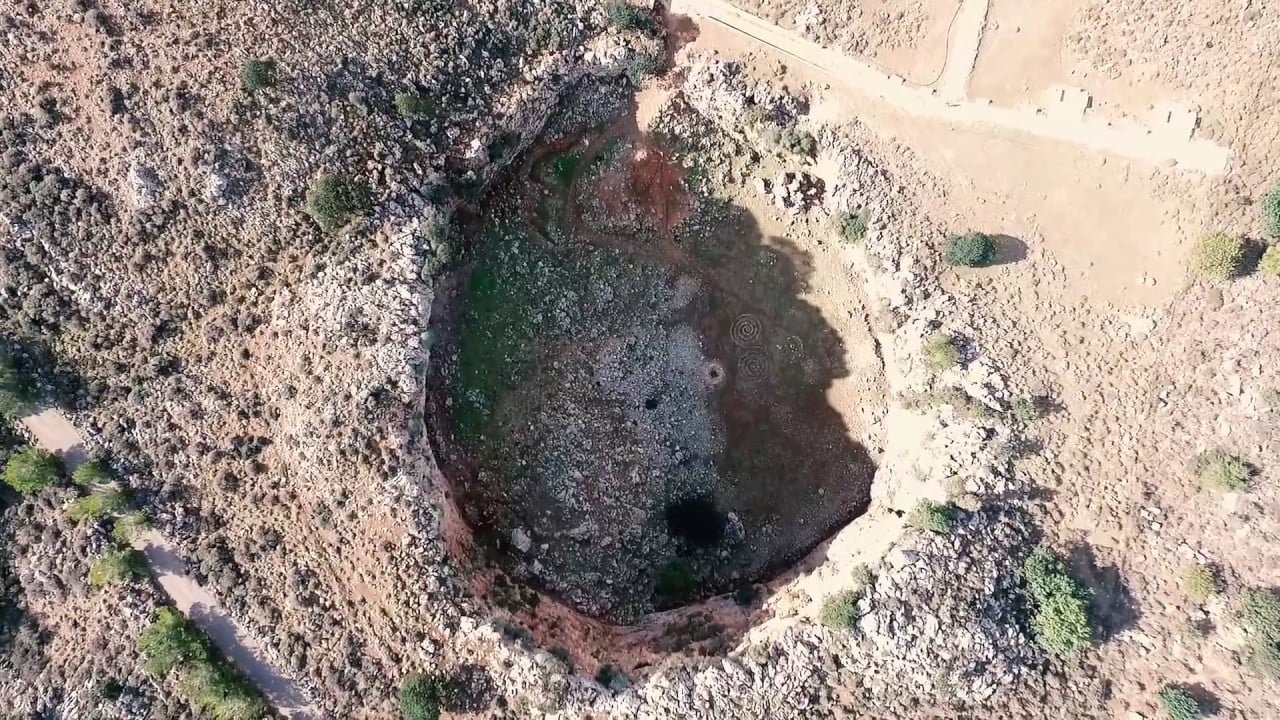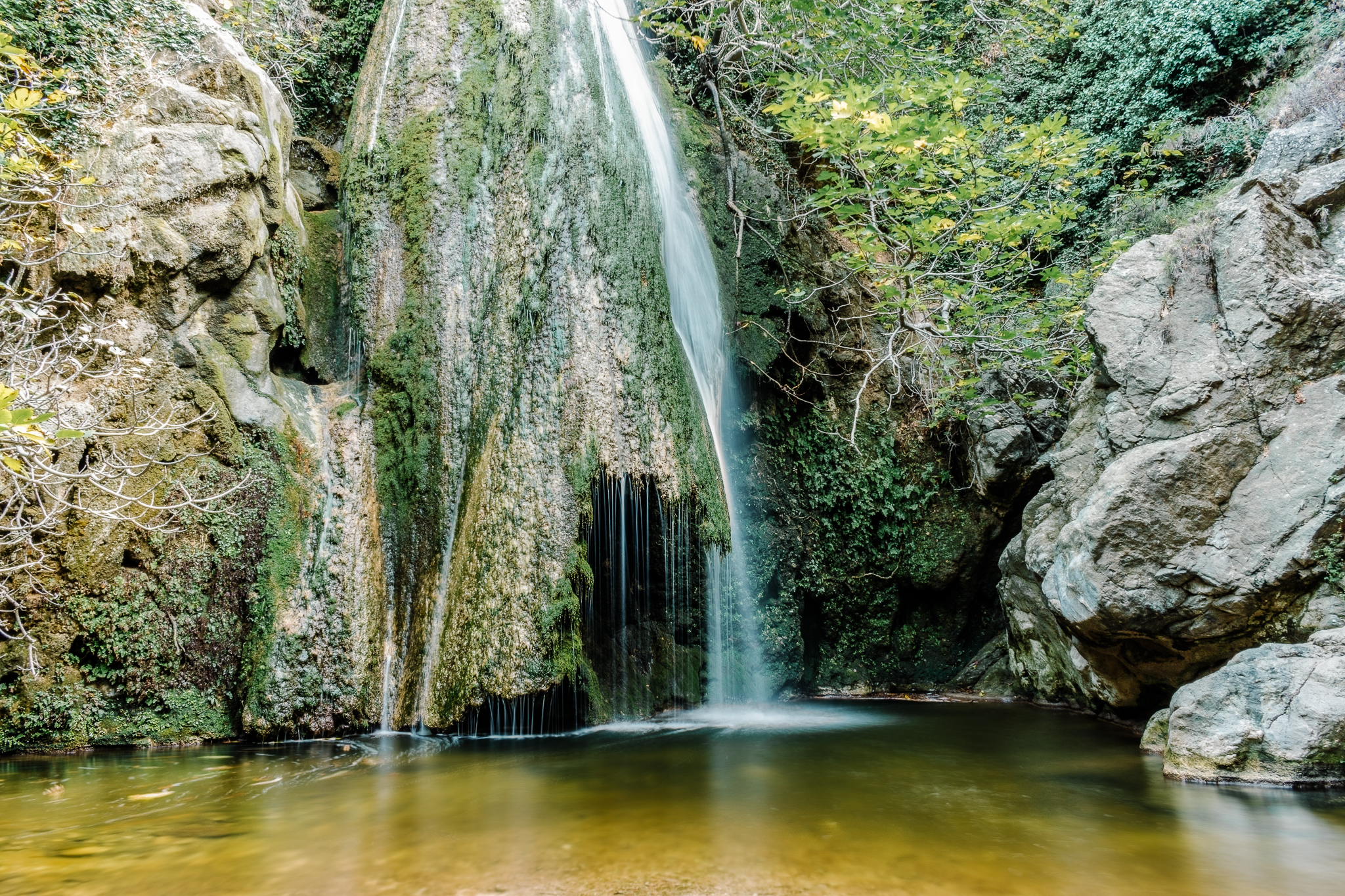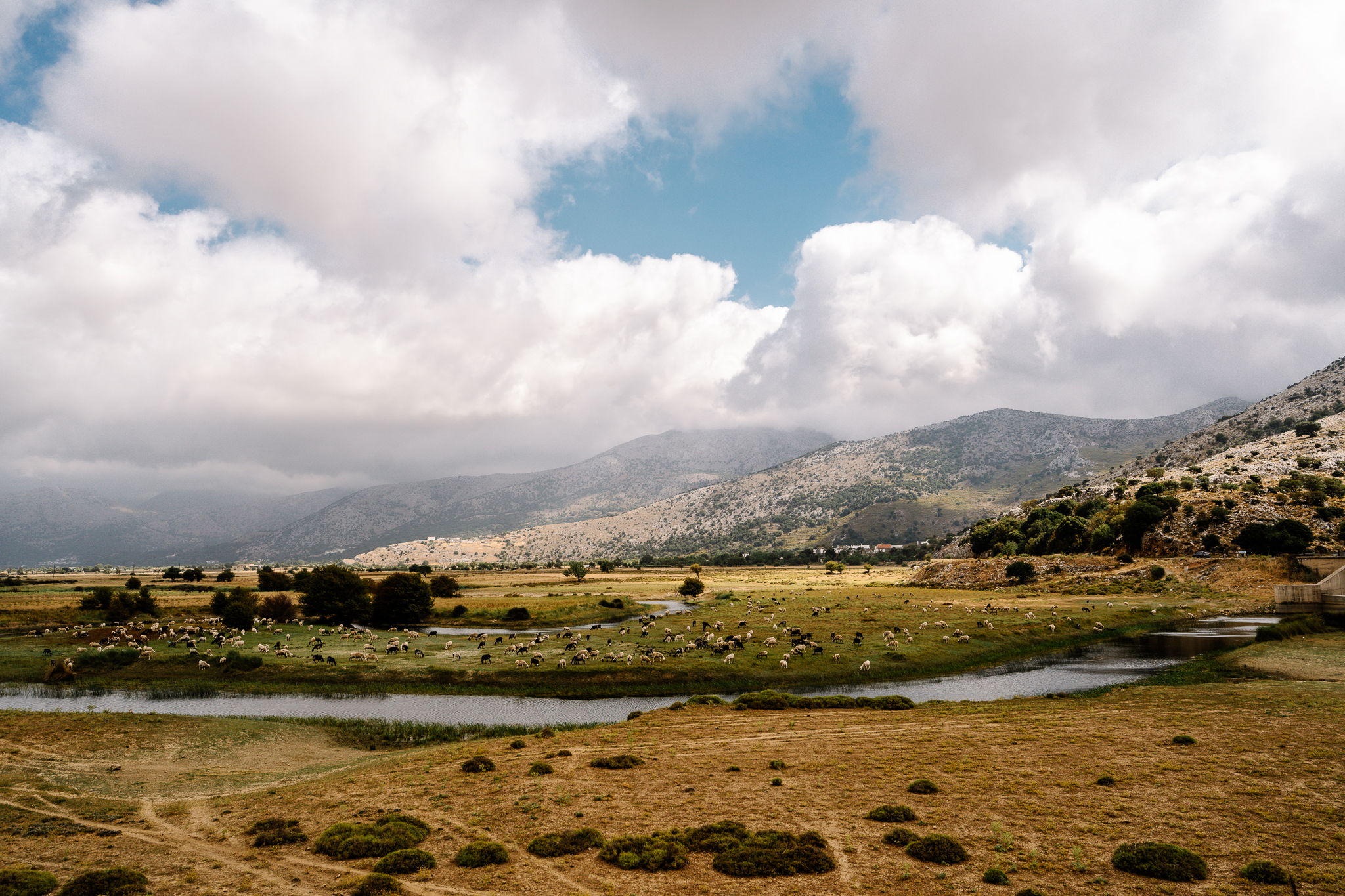Approximately 15km west of Heraklion, Crete, at the foot of Mount Stroumboulas and close to the village Marathos, visitors can be surprised when encountering an imposing, even unusual, spectacle, a large crater that has nowadays developed into a rock climbing destination. Not something that has never been seen before, this crater is generally believed to have resulted from a geological phenomenon understood by experts. Similar spots exist in other parts of Greece and the world. However, Voulismeno Aloni is unique as the reasons behind its creation remain unclear and have not been fully proven, despite expert assertions.
The geological phenomenon is known as a doline, or karst doline, a natural enclosed depression in the ground caused by some form of collapse, leaving a large crater. This is how Voulismeno Aloni, meaning sunken threshing floor, is believed to have been formed.
Karst dolines are usually formed either as a result of limestone erosion caused by water or the collapse of an underground cave’s roof. But experts remain baffled with Voulismeno Aloni, so far failing to offer full proof of its formation process. Also, its dimensions are highly unusual.
Prophet Elias explanation
Humans have always provided their interpretations of things not understood. Over the ages, humans have attributed inexplicable events to divine rage or generosity, creating myths that have been preserved either fully or partially through oral tradition.
This has also precisely been the case with Voulismeno Aloni. In a book titled “Crete of Legends”, Cretan writer Vassilis Haronitis notes that, according to local legend, a threshing floor once existed at the spot where the mystery doline is situated today. The story goes as follows: A farmer who owned the threshing floor provided attentive maintenance work, cleaning and repairing any damages every summer, in preparation for the next harvest. One season was exceptionally productive, so much so that even barren land contributed to the overall harvest.
As a result, the farmer struggled to cope with the increased threshing needs of his bumper crop, nor did he have enough time to bring home all of his production or hay for his animals. He worked frantically in an effort to complete his work ahead of the rain season, fearing it would destroy an entire year’s worth of work.
On the day when the Greek Orthodox Church commemorates Prophet Elias, forbidding work in honour of the saint, the farmer refused to disrupt his work and lose a day’s worth of production. He even ordered his wife and sole child, a daughter, to join him at the threshing floor. “On a day like this? The saint will scorch us,” exclaimed the farmer’s wife in fear, Haronitis writes in his book. The response she got was: “Saints have other things to do!”
So the trio went along to the threshing floor, strapped up the oxen and began work, the daughter singing and the mother still protesting, in whispered tone, about having to work on the saint’s day. Otherwise, silence prevailed as there was nobody else in sight; that is until an extremely loud noise broke out, alarming all three. Before they could react, the threshing floor sank, vanishing into the earth the oxen and all three family members. According to legend, this was how Prophet Elias chose to punish the family for not honouring him.
According to a variation of this story, the owner of the threshing floor was a priest who opted to work at this farming facility on the day commemorating the saint rather than offer church service.
Also, according to legend, noises can still he heard at the doline every year on July 20, the day commemorating Prophet Elias.
Stories and legends are fun but what does science have to say about Voulismeno Aloni?
Experts insist on the prevalence of the aforementioned theories – limestone erosion and underground cave roof collapse – for the Cretan doline. Geologists support that an underground cave was formed long ago as part of a large underground network connected to the Almiros Spring in the area. The constant erosion caused by the waters appears to have thinned the cave’s roof, causing it to collapse, resulting in the formation of this gigantic crater, the experts contend.
However, the purported cave has yet to be discovered, nor has any evidence or clues concerning its existence emerged, leaving the theory of experts unconfirmed.
The size of the Cretan doline adds to the confusion as it is unusually extensive, both in terms of depth and width. Dolines are normally five to ten metres deep with diametres of between twenty to fifty metres. Voulismeno Aloni is nearly fifty metres deep with a diameter of 90 metres.
Its unique dimensions, along with the futile, until now, search for the cave, have intensified the mystery surrounding Voulismeno Aloni.
It should be pointed out that locals continue to believe that a threshing floor once existed at the site of the current doline but vanished along with its owner.
From threshing floor to rock climbing destination
Whatever the case, the spot is unique. The gigantic crater is an impressive sight, both from above and within. The acoustics at the doline’s centre are exceptional. Inside it, rock climbers seem microscopic, possibly even powerless. The challenge may well offer additional incentive to rock climbers seeking to conquer this towering formation.
Voulismeno Aloni has operated as an organised rock climbing destination over the past twelve years, attracting climbers from all over the world. Reaching its centre at the bottom is comfortable as adjustments have been made at the interior. A total of twelve rock climbing routes are offered, some of which are for advanced climbers. Heights range from ten to 44 metres.
Many rock climbers, experienced and beginners with schools, visit Voulismeno Aloni virtually every weekend. Onlookers may watch them climb, or try for themselves.







